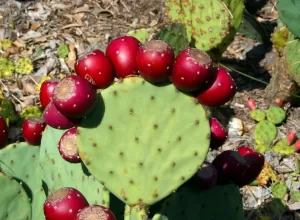Phaseolus acutifolius
Phaseolus acutifolius, also known as the tepary bean, is a legume native to the southwestern United States and Mexico and has been grown there by the native peoples since pre-Columbian times. It is more drought-resistant than the common bean (Phaseolus vulgaris) and is grown in desert and semi-desert conditions from Arizona through Mexico to Costa Rica. The water requirements are low. The crop will grow in areas where annual rainfall is less than 400 mm (16 in).
Kochia prostrata
Forage kochia (Kochia prostrata (L.) Schrad.), also known as prostrate kochia, or prostrate
summer cypress is a long-lived, perennial, semi-evergreen, half-shrub well adapted to the
temperate, semiarid and arid regions of central Asia and the western U.S. In these areas it
has proven to be a valuable forage plant for sheep, goats, camels, cattle, and horses.
Atriplex canescens
Saltbush is a vernacular plant name that most often refers to Atriplex, a genus of about 250 plants distributed worldwide from subtropical to subarctic regions. Atriplex species are native to Australia, North and South America, and Eurasia. Many Atriplex species are halophytes and are adapted to dry environments with salty soils.
Atriplex halimus
The leaves are edible. Extracts from the leaves have shown to have significant hypoglycemic effects.
The species has potential use in agriculture. A study allowed sheep and goats to voluntarily feed on A. halimus and aimed to determine if the saltbush was palatable, and if so, did it provide enough nutrients to supplement the diet of these animals. In this study they determined when goats and sheep are given as much A. halimus as they like, they do obtain enough nutrients to supplement their diet – unless the animal requirements are higher during pregnancy and milk production....
Nopal Cactus: A Sustainable Food of the Future
Maybe you’ve tried nopal cactus, and perhaps you loved it. Or perhaps, you couldn’t get around its unique texture, however, nopal might just be the food of the future. At least, that’s what the UN is claiming. This sustainable food is gaining attention in helping solve food insecurity.







